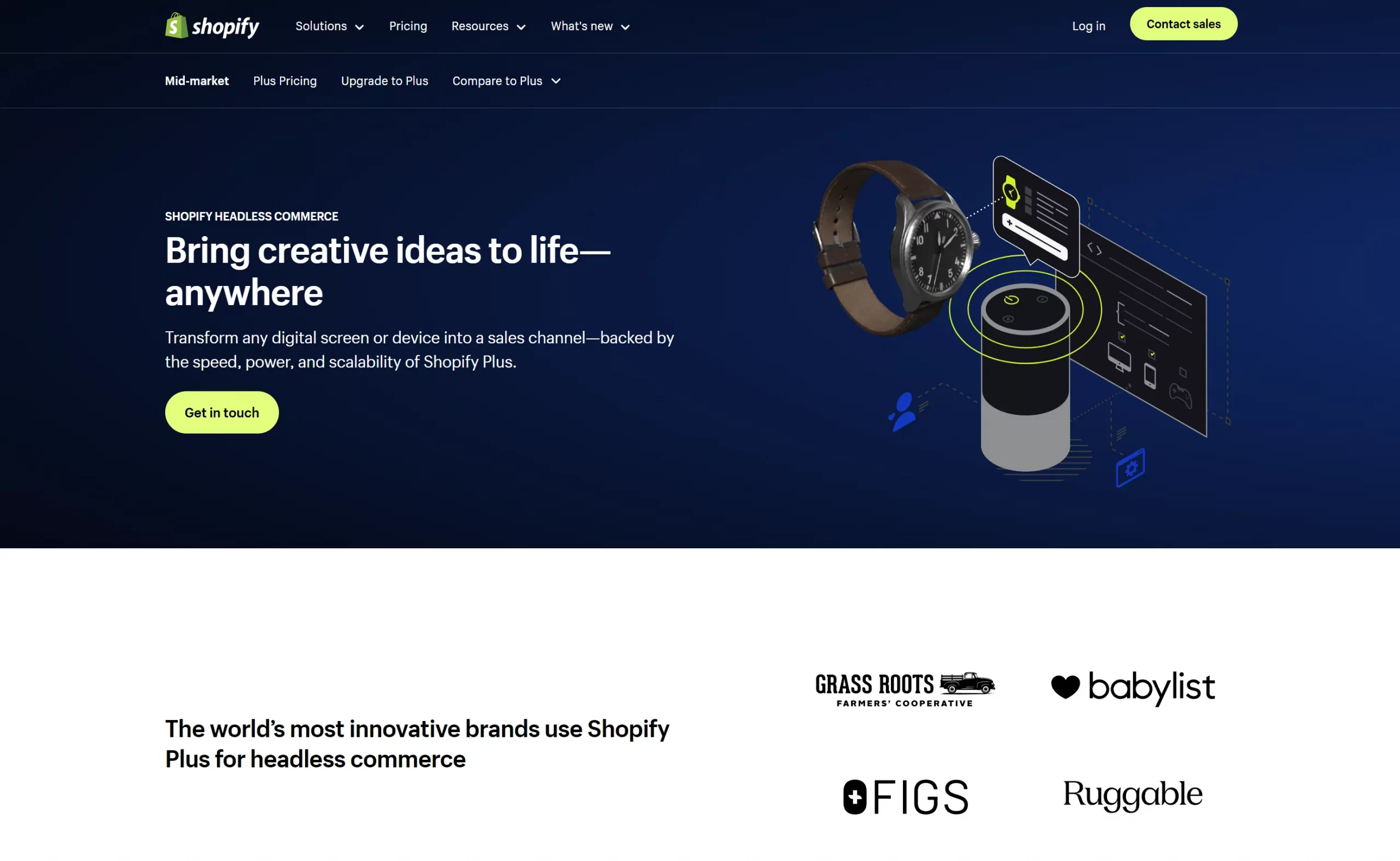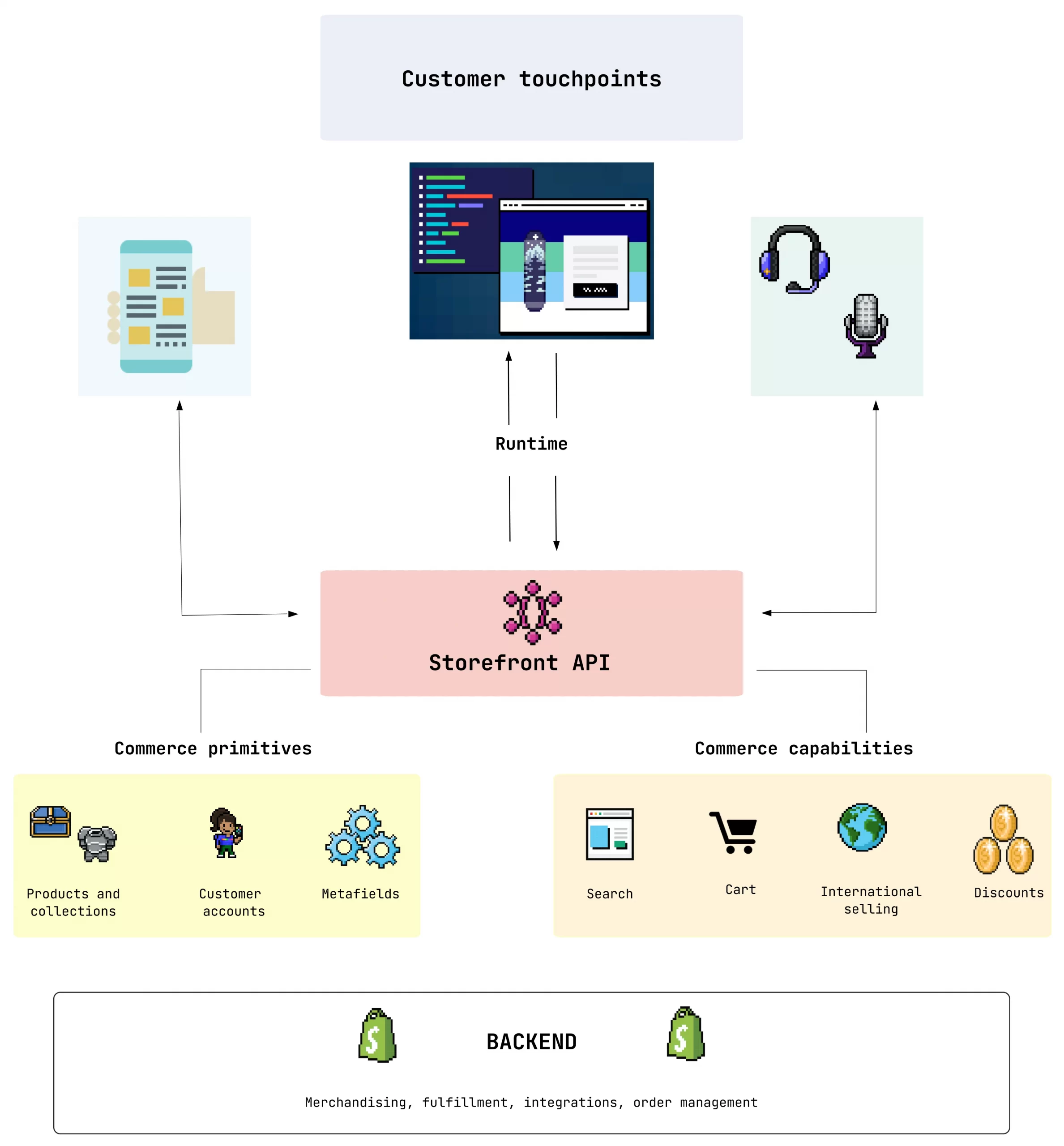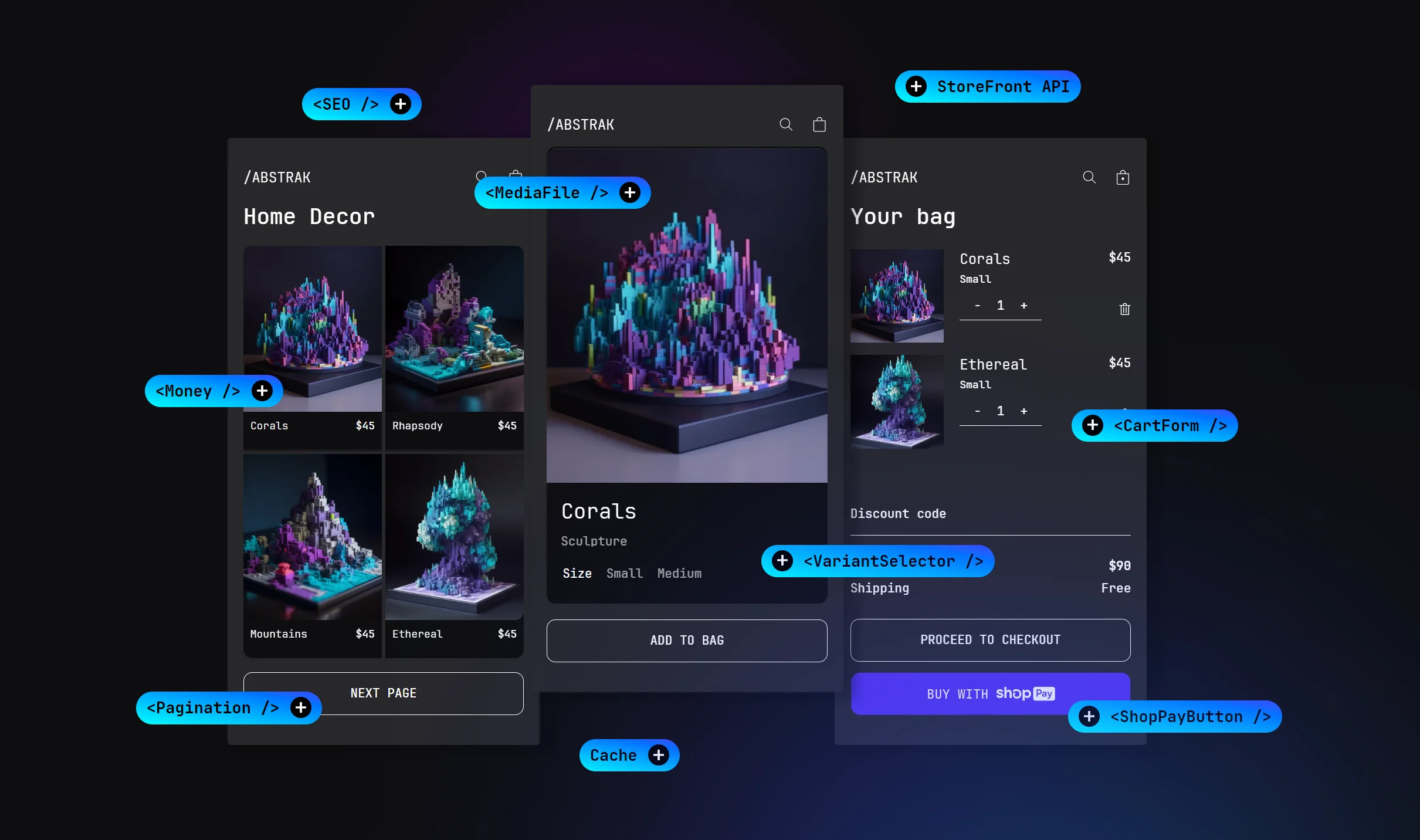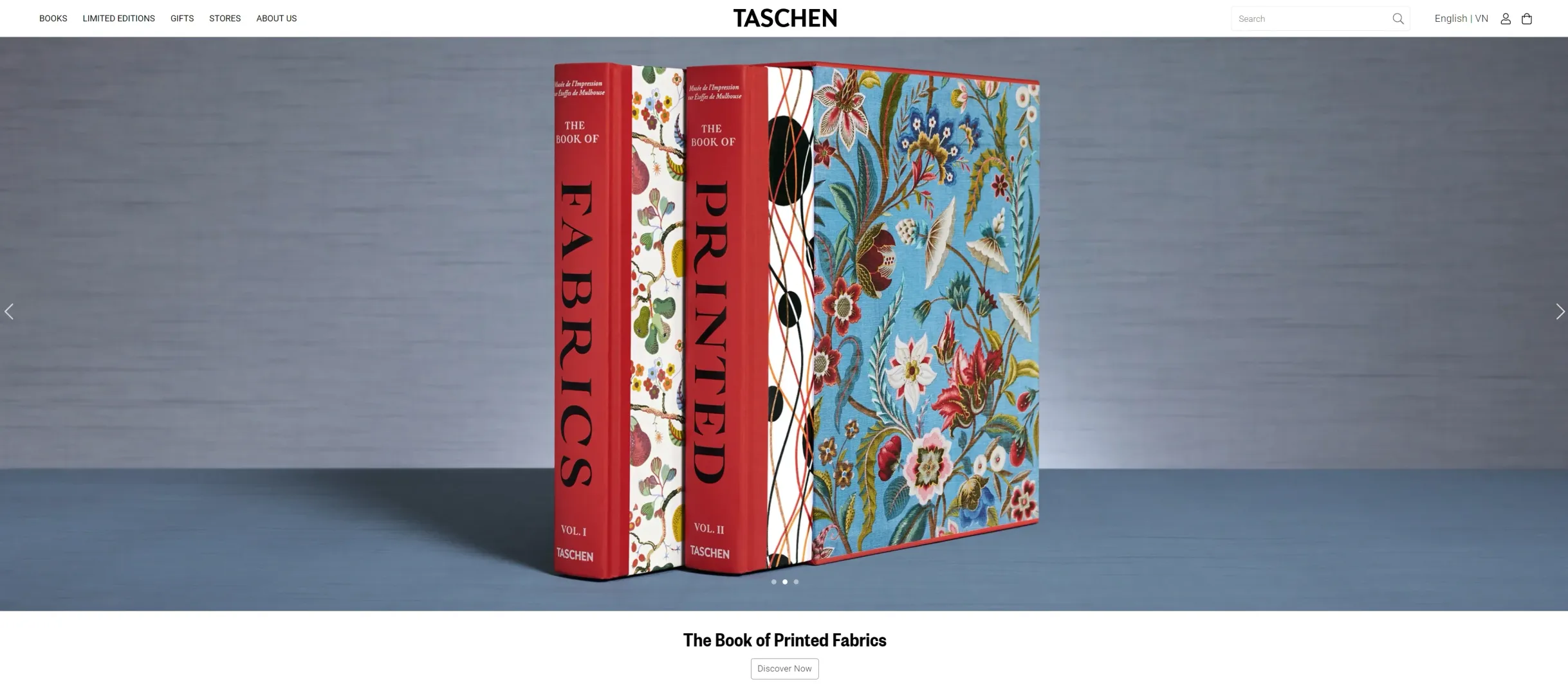I've noticed that Shopify headless has become an increasing trend among high-volume merchants, thanks to the great level of freedom it offers. But Shopify headless is more than just creativity control. This eCommerce model also has so much more to offer, and are you fully aware of it?
If you want to learn more about Shopify headless commerce, welcome! In this article, let's walk through:
- What is Shopify headless commerce?
- How does Shopify headless work?
- The pros and cons of headless Shopify commerce
- Considerations before going headless on Shopify
- Case study of top stores using Shopify headless to inspire you
Without further delays, let's learn more about this modern eCommerce model.
An Introduction to Shopify Headless Commerce?
What is Shopify Plus headless commerce?
Shopify Headless Commerce represents a significant departure from the traditional, monolithic approach to eCommerce platforms. It offers merchants unprecedented flexibility and control over their online presence.
So what is Shopify headless commerce? In essence, it detaches the front-end customer experience (commonly referred to as the “head”) from the back-end eCommerce functionality (the “body”). This separation is achieved through the strategic use of APIs (Application Programming Interfaces), which act as the “middle man,” facilitating seamless communication between the two systems.

By opting for a headless architecture, you will be granted the complete freedom to create unique storefronts instead of tying yourself to monolithic platforms. You can deploy your own composable tech stack and integrate it with any tools and systems of your choice to craft the online shopping experiences you want. Meanwhile, the robust and reliable backend infrastructure provided by Shopify continues to manage all the complex eCommerce operations behind the scenes. This includes crucial aspects like product catalog management, order processing, inventory tracking, payments, shipping logistics, and customer relationship management.
I believe this strategic separation allows you to focus on delivering exceptional front-end experiences. There’s no worry about the technical complexities of managing a high-performance eCommerce platform.
Headless Shopify vs traditional Shopify
If you still wonder how Shopify headless is different from tradition Shopify, here's a detailed comparison for your consideration.
Feature | Shopify headless | Traditional Shopify |
Frontend flexibility | Complete control over the storefront, enabling bespoke designs and integrations with any frontend framework. | Restricted to using pre-built themes and apps from the Shopify App Store. Customization requires coding within Liquid framework. |
Development experience | Requires experienced developers familiar with APIs, data fetching, and frontend frameworks. | Is more user-friendly for merchants with limited technical expertise. Drag-and-drop interface for basic customization. |
Website performance | Potential for faster loading times and improved SEO due to streamlined codebase and optimized frontend. | Can be limited by pre-built theme structure and app integrations. |
Omnichannel capabilities | Allows for seamless integration with various platforms beyond online stores (mobile apps, IoT devices, social media, etc.). | Offers built-in integrations for major social media platforms and marketplaces. Custom integrations require third-party apps or development. |
Cost | Requires dedicated development resources, potentially increasing ongoing maintenance costs. | More predictable pricing with standardized plans and app subscriptions. |
Maintenance | Requires continuous updates and management of both frontend and backend systems. | Have all your platform updates and security handled by Shopify. |
How Headless Shopify Works
To go headless on Shopify, you'll need two main components: The storefront API and the back-end eCommerce system. Here's a visualization of how these elements work together to run your Shopify headless store.

1. Storefront API
The Shopify Storefront API is the bridge that makes Shopify headless commerce possible. It acts as a powerful messenger between your chosen front-end platform and the core functionalities of your Shopify store.
This API grants developers access to retrieve and display dynamic data from your Shopify store in a structured and efficient manner. You can request specific data points and manipulate them to create truly unique shopping experiences, from crafting a custom homepage to building a unique checkout section. This level of control allows for complex integrations, personalized content, and innovative features that would be difficult or impossible to achieve with traditional eCommerce platforms.
2. eCommerce backend
The Shopify backend serves as the powerful engine room, working tirelessly behind the scenes to ensure your online store runs smoothly and efficiently. It's the brains of the operation, handling all the complex eCommerce logic and data management, even though customers never directly interact with it.
The Shopify backend provides a centralized hub for managing your entire online business, including:
- Product management: Easily add, update, and organize your products, variants, images, and descriptions.
- Inventory control: Track stock levels in real-time, receive low-stock alerts, and automate inventory updates.
- Order processing: Handle incoming orders, process payments securely, and manage fulfillment workflows.
- Customer management: Build detailed customer profiles, segment your audience, and personalize marketing campaigns.
The Pros and Cons of Headless Shopify
Sure, Shopify Plus headless is a powerful function, but it's not the perfect solution. There are several benefits and drawbacks that you should be aware of before going headless on Shopify.
If you're still sitting on the fence, here's a quick overview of all the pros and cons of this modern eCommerce model.
Pros | Cons |
1. Unmatched design flexiblity Have complete control over the look and feel of your online store to create custom storefronts, unique user experiences, and brand consistency across all platforms. | 1. More maintenance effort Require a dedicated team or technical expertise to manage ongoing maintenance, updates, and security patches. |
2. Improved website performance Lightweight front-ends and optimized code lead to faster page load speeds, improved SEO rankings, and a better user experience. | 2. Steep learning curve Might be challenging for merchants without technical backgrounds to fully understand APIs, headless architecture, and front-end development. |
3. Great scalability Easily adapt to changing business needs and scale your online store as your business grows without being limited by platform constraints. | 3. Uncontrolled monthly pricing Break free from Shopify subscrption model means you'll have to take your monthly expenses in consideration. |
4. Seamless third-party integrations Integrate your storefront with any third-party tool or service using APIs, including marketing automation platforms, CRMs, and custom business applications. | |
5. Powerful omnichannel selling feature Sell seamlessly across websites, mobile apps, social media, marketplaces, and emerging technologies like IoT devices and VR experiences. |
Considerations Before Committing to Shopify Headless
Before taking the plunge into Shopify headless commerce, it's crucial to carefully consider several factors to make sure that this model is ideal for your business and thus maximize your chances of success.
#1. Long-term vision and goals
Going headless is a significant decision that should align with your long-term business goals. Ask yourself: Will a headless architecture truly enhance your customer experience, differentiate your brand, or enable unique functionalities that are essential for your growth strategy? If the answer to these questions is yes, then Shopify Headless is for you!
#2. Technical expertise & resources
Headless development requires a higher level of technical expertise than traditional Shopify development. You'll need skilled front-end developers who are comfortable working with APIs, Remix frameworks, and potentially multiple programming languages. If you lack the necessary resources, assess your internal team's capabilities or consider partnering with an experienced Shopify Headless agency.

#3. Budgetary considerations
Building and maintaining a headless storefront typically involves higher costs than using pre-built Shopify themes. You'll need to consider expense factors such as development, hosting, ongoing maintenance, third-party integrations, and potentially hiring external experts. Ensure your budget aligns with the scope and complexity of your desired headless solution.
#4. Functionality requirements
While the Shopify Storefront API provides access to a wide range of Shopify's core functionalities, some niche features or specific customizations might require additional development effort or integration with third-party apps. Carefully audit your must-have features and ensure they can be implemented within a headless framework.
#5. Maintenance and support
Unlike traditional Shopify stores, where platform updates and security patches are handled automatically, you'll be responsible for maintaining and updating both your front end and any custom integrations in a headless setup. Have a plan in place for handling bug fixes, security updates, and ongoing maintenance to ensure your store remains secure and performs optimally.
#6. Time commitment
Developing a custom headless storefront takes time. Unlike launching a Shopify store with pre-built themes, anticipate a longer development cycle and factor this into your project timeline. Communicate clearly with stakeholders about realistic launch dates and potential delays.
By thoroughly evaluating these considerations, you can make an informed decision about whether Shopify Headless Commerce is the right fit for your business needs. Consequently, you'll be better prepared for the transition to go for this modern eCommerce model.
Shopify Headless Store Examples to Inspire You
Kotn
Kotn, a conscious apparel brand known for its commitment to quality and ethical sourcing, sought to align its digital presence with its commitment to exceptional quality and customer experience. Having already established its online store on Shopify, Kotn recognized the need for a more flexible and scalable solution to support its ambitious growth plans.

The brand turned to Shopify Headless Commerce, leveraging the power of the Storefront API to craft a truly bespoke online experience. A key aspect of this transition involved combining two separate stores into a single, unified platform, streamlining operations and reducing reliance on custom apps and workarounds.
This newfound flexibility empowered Kotn to create custom product pages that beautifully showcased their commitment to ethical sourcing and design excellence. They also implemented a new CMS and a tailor-made checkout flow, ensuring a cohesive and on-brand experience for their customers. By embracing a headless architecture, Kotn unlocked greater agility, improved site performance, and empowered its team to manage its growing online business with greater efficiency and control.
What Kotn has achieved:
- The ability to make site changes much quicker than before
- Keeping site speed fast, even during high-traffic periods
- Laying an infrastructure foundation to leverage future technology
Taschen
Since 1980, TASCHEN has captivated readers with exquisite art and design publications. Yet, even for this established publishing house, transitioning to the digital age presented unique challenges. Seeking a platform to support their global presence and create a seamless customer journey, TASCHEN chose Shopify Plus.

By leveraging Shopify Plus’s headless architecture, TASCHEN integrated a robust Product Information Management (PIM) system, streamlining their extensive catalog management and ensuring accurate, consistent product information across all channels. Coupling this with the power and security of Shopify Checkout, TASCHEN created a frictionless purchasing experience for customers worldwide.
Shopify Plus’s out-of-the-box solutions and plugin ecosystem proved instrumental in simplifying TASCHEN’s digital transformation. Unlike their previous system, Shopify enabled streamlined implementation and management of critical eCommerce features, including discount codes, gift vouchers, diverse payment options, and targeted customer segmentation.
The result? TASCHEN successfully unified its online and offline presence, seamlessly integrating online retail, physical stores, and even phone orders. Further expanding their reach, TASCHEN leveraged Shopify Plus to incorporate third-party suppliers and dropshipping, opening new sales channels and unlocking unprecedented growth. By embracing the agility and scalability of Shopify Plus, TASCHEN has positioned itself for continued success in the ever-evolving world of publishing.
What TASCHEN has achieved:
- 20% increase in year-on-year revenue growth
- 6% increase in average order value (AOV)
- 12% increase in total orders
Shopify Headless – FAQs
What is headless in Shopify?
Shopify Headless refers to a way of using Shopify where you separate the front-end of your online store (the "head") from the back-end platform (the "body"). Instead of using Shopify's pre-built themes, you connect to your Shopify store's data using APIs. This gives you complete freedom to design and build your storefront with any technology you want – websites, mobile apps, voice assistants, you name it, while still leveraging Shopify's powerful ecommerce engine for managing products, orders, and more.
How much does Shopify headless cost?
Shopify Headless itself doesn't have a separate price tag. You'll need to be in the Shopify Plus plan (starting from $2,500/month) to be eligible for this feature. However, the development costs for building and maintaining a custom headless storefront can be significantly higher than using Shopify's standard themes. You'll likely need experienced developers, either in-house or through an agency, which can add up.
What is the difference between headless and traditional Shopify?
Traditional Shopify is like buying a pre-designed house. You can customize it to some extent, but you're limited by its existing structure.
Headless Shopify is like buying a plot of land and building a custom house from scratch. You have total control over the design and functionality but need more expertise and resources to build it. Traditional Shopify is simpler and more affordable, while Headless Shopify offers ultimate flexibility and customization.
What are the headless limitations of Shopify?
While powerful, Shopify Headless does have limitations. Not all of Shopify's features are immediately accessible through the API, potentially requiring custom workarounds. You'll also need more technical expertise to manage a headless setup compared to traditional Shopify. Additionally, many convenient features from the Shopify ecosystem, like the app store and pre-built integrations, may require more complex integrations or be unavailable in a headless architecture.
Final Words
Shopify Headless Commerce represents a significant evolution that allows enterprises to craft truly unique and engaging online experiences. We hope that this article can help you catch a glimpse of this powerful eCommerce model and decide if you should go for headless Shopify.
If you like this article and want to explore more about this platform, don't forget to check out other Shopify blogs on our website.

